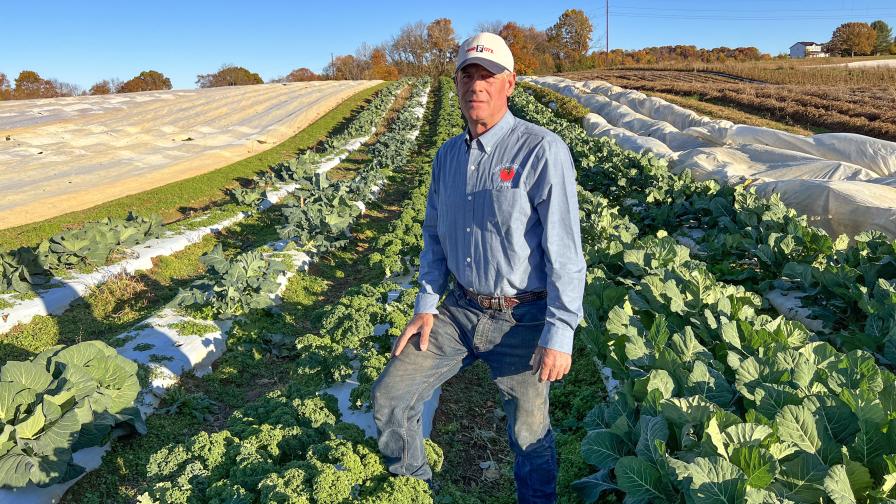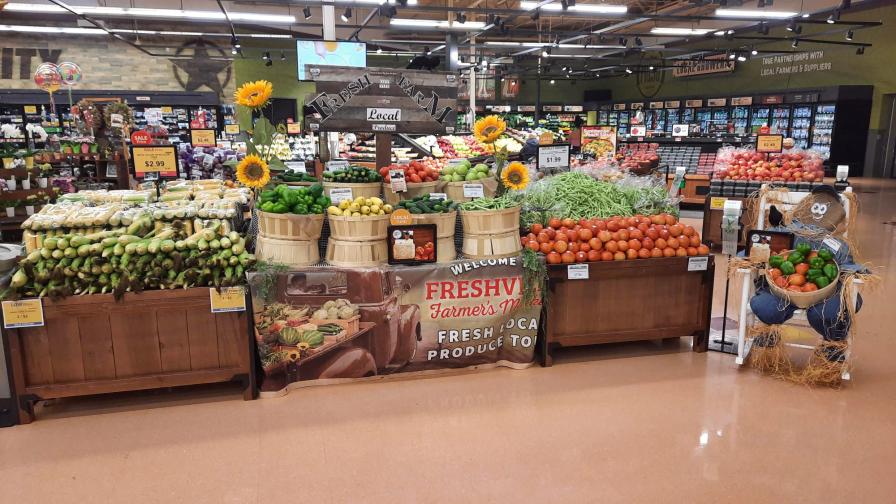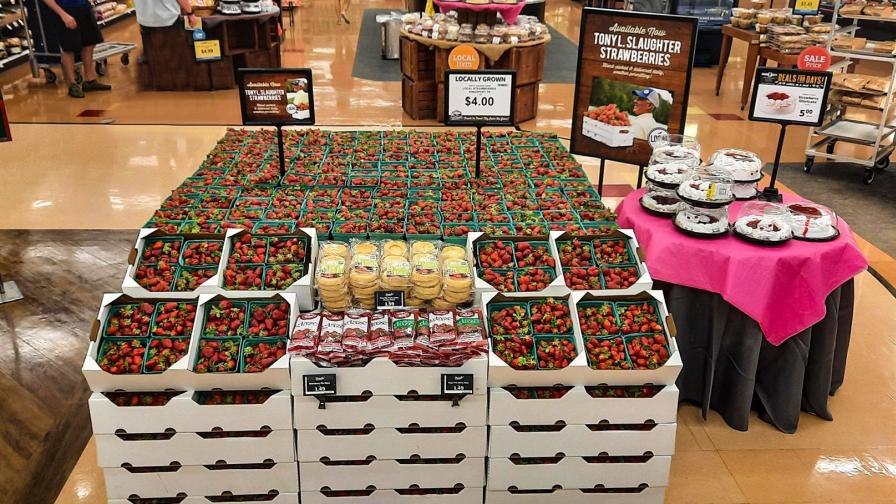How Tony L. Slaughter Farms Is Taking Fresh to the Next Level

Tony Slaughter is always thinking about how to produce and deliver fresh produce for consumers.
Photo by Tina Slaughter
This past season, Tony Slaughter, whose eponymous farm is located in Northeast TN, and Food City grocery stores trialed a program that delivers freshly harvested produce directly from the field to the store shelves.
That straight-from-harvest-to-store-shelves concept is literal. Slaughter not only bypasses packing houses, distributors, and the store’s docks for this program, he drives up to each store’s front door and brings his strawberries, tomatoes, cucumbers, and other produce into the store.
This past year was a see-how-it-goes for both sides. Food City had some experience, having worked with a significantly larger grower, Virginia-based Mann Farms. But Tony L. Slaughter Farms is less than 300 acres and serves only 10 of its locations.
As for Slaughter, he needed to work out if he could realistically switch up his planting and harvesting schedules in a way that allowed for every-other-day deliveries.
The experiment worked better than anticipated.
“The best way to put this is, it’s pretty easy competition,” Slaughter says. “When you’re coming straight out of a field, and your competition is shipped in from Mexico or California, you have an advantage. The freshness is so much better.”
Take a look at how Slaughter worked with Food City to see if a similar program could work for you.
How the Program Works
The Freshville Farmer’s Market program is just about as simple as it sounds. Every other day, Slaughter delivers to each of the 10 stores he supplies. The stores immediately merchandise the produce, which can sell out before the end of the day.
There are some details both Food City and Slaughter must finesse.
The store merchandises Freshville crops separately from the rest of its inventory. That requires training for each store’s employees to allow the displays to sell out. Travis Jones, District Produce Supervisor for Food City, doesn’t want Slaughter’s produce mixed with distributor-supplied vegetables. And sell-outs build demand and customer loyalty.
Food City uses Slaughter’s image and name with its displays and in its advertising.
“In these 10 stores, we try to make our local display as much Tony Slaughter as possible,” Jones says.
To keep things running smoothly, Slaughter keeps an open dialogue going.
“Tony has the produce manager’s cell phone number,” Jones says. “In other words, if he’s running low, Tony gives him a heads up.”
That allows the produce manager to pull the needed produce from their distributors.
Naturally, both Slaughter and Food City will continue working with distributors outside of this program.
Why He Drives the Delivery Truck
With such frequent deliveries, you may think Slaughter would have hired a driver to avoid losing much-needed help around the farm. Instead, Slaughter assigned himself delivery duties.
Why? It allows him to get feedback from each store.
“Look, if you’re doing business with a [large] company, that’s a long a way from top down to me,” Slaughter says. “If your sales are particularly good on a specific item, you need that feedback.”
His delivering via the front door every other day is part of the marketing. It allows customers to see a local farmer arrive with his own produce.
“It’s just good business, good visual as well, to have him deliver to the front, not the docks,” says Jones.
One customer stopped Slaughter in the parking lot during a delivery — she was curious about what he was doing.
“She was amazed when I told her. She didn’t understand how farming worked,” he said.

Tony Slaughter bypasses packing houses, distributors, and Food City’s docks every other day when he drives up to 10 of their Tennessee stores’ front doors and brings in strawberries, tomatoes, cucumbers, and other produce from his farm.
Photo courtesy of Food City
Shifts in Production
Slaughter went all in for Freshville — he devoted a full 60% of his production to it. While Food City was an established customer, his produce previously went through traditional channels before hitting store shelves. The new program required new harvesting schedules and, therefore, new planting timelines.
“We try to plant smaller and multiple plantings so we have a consistent supply,” Slaughter says.
Since this was the first year for Freshville, Slaughter had to make his best guesses on quantities and timing for each variety.
“Getting it right didn’t happen 100% for me,” he says. “I didn’t understand what volume of slicing tomatoes I’d need. I didn’t understand how much bell pepper I would use. Sometimes we were short, sometimes we ran out.”
Slaughter says Food City understood it was the first year and it would adjust its order to distributors when Tony L. Slaughter Farms fell short.
The smaller and more frequent orders required redistributing workers, especially with Slaughter running the deliveries. But Slaughter and his seasoned staff made it work.
The program enjoyed a long season, starting with strawberries and finishing up in late November with collards, kale, and greens.
The fall greens are a new crop for Slaughter. He’s happy with the results. Although his H-2A crews left before the end of the season, he’s able to handle harvesting with a limited crew. He’s also learning new things with these crops, such as collards are sweeter after experiencing a frost.
Building on Success
Both Food City and Slaughter are looking forward to the second year of their partnership.
For Food City, its Freshville program emphasizes locally sourced bona fides.
As for Slaughter, the program built his reputation. That can be a double-edged sword since he must deliver on his quality consistently. But his community now knows him by name and looks forward to his deliveries.
“We had a tremendous response and loyalty from customers as the season wore on, asking for our products,” he says.
Want to Launch a Similar Deal? Here’s What You Must Have in Place First
Tony Slaughter says if you would like to pitch a field-to-shelf program with your local stores, there are a few things you need to have in place first.
- Harmonized GAP (good agricultural practices)
- Enough harvest volume
- A reliable source of labor
- Cooling capabilities
- Ability to provide packaging

According to Tony Slaughter, stores immediately merchandise the produce, which can sell out before the end of the day.
Photo courtesy of Food City
At a Glance: Tony L. Slaughter Farms
Founded: 1980
Owner: Tony and Tina Slaughter
Size: 279 acres
Crops: Strawberries, heirloom tomatoes, Roma tomatoes, grape tomatoes, beans, bell peppers, banana peppers, poblano peppers, cubanelle peppers, jalapeño peppers, onions, cabbage, broccoli, collard greens, kale, mustard greens, okra, pumpkins, yellow squash, zucchini squash, and sweet corn.










